All 50 U.S. states have selected animals as official state symbols. These animals are chosen because they represent a state’s unique history, culture, and geography. Nevada has named six official state animal symbols that best represent the Silver State.

1. State Animal: Desert Bighorn Sheep
The desert bighorn sheep (Ovis canadensis nelsoni) is one of three subspecies of bighorn sheep and is found exclusively in the desert regions of the southwestern United States and northwestern Mexico.
The desert bighorn sheep was chosen as Nevada’s state animal in 1973. The sheep is most often found in southern Nevada, where the rocky and steep mountainous habitat offers protection from predators.
The desert bighorn sheep is smaller and lighter in color than its relative, the Rocky Mountain bighorn sheep. The Rocky Mountain bighorn can grow to around 300 pounds, while the desert bighorn weighs about 80-100 pounds less at maturity.
The desert bighorn is perfectly adapted to life in the driest state in the U.S. It can survive with less water than many other mammals. The sheep also has a nine-stage digestive cycle that allows it to extract maximum benefit from the nutrient-poor desert vegetation that makes up its entire diet.
While the ram’s horns grow a bit larger, both rams and ewes grow curved horns. At maturity, a ram’s horns can weigh around 30 pounds, which is about 10-15% of the sheep’s total body weight.

Desert bighorn sheep live in a rugged desert environment.
©iStock.com/randimal
Conservation Efforts
Nevada’s herd of desert bighorn sheep used to number in the tens of thousands. By the 1960s, that number dropped to around 3,000. Hunting and disease from domesticated sheep were the primary culprits behind the sheep’s decline.
Through intense conservation efforts, the desert bighorn has mounted a comeback. The sheep still faces serious challenges, though. Drought conditions and habitat destruction are making things difficult for the desert bighorn, but an outbreak of bacterial pneumonia that began affecting the state’s herd in 2012 may be the biggest threat. This infection can be fatal, especially to lambs. But conservationists continue to seek solutions to ensure the state animal of Nevada can thrive in its desert home.
Doug Nielsen, a spokesman for the Nevada Department of Wildlife, said in a 2014 interview, “The bighorn is representative of everything about Nevada. It’s rugged. It lives in a rugged landscape [and] makes its life in a harsh environment. It has had its ups and downs like the human residents of Nevada, but it continues to fight and hang in there.”

Desert bighorn sheep populate Valley of Fire State Park in Overton, Nevada.
©Frank Fichtmueller/Shutterstock.com
2. State Bird: Mountain Bluebird
The mountain bluebird (Sialia currucoides) was selected as Nevada’s state bird in 1967, making it the first of Nevada’s official state animals. The bird makes its home in Nevada year-round, making it a logical choice for the official avian symbol of the state.
The mountain bluebird is known as “the bluest of the bluebirds” for its vibrant blue plumage. Male mountain bluebirds feature a bright blue back and a pale white belly. Females are grey, brown, or pale orange with a bluish tail and wings. The birds measure around six to seven inches and weigh around one ounce.
The mountain bluebird is also the state bird of Idaho. Its close relative, the eastern bluebird, is the state bird of Missouri and New York.
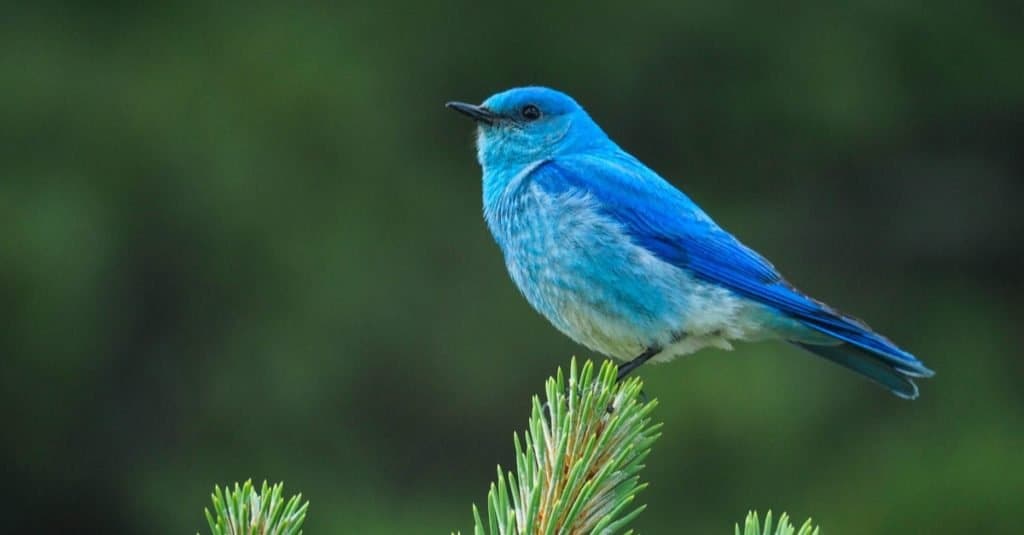
The male mountain bluebird is known as “the bluest of the bluebirds.”
©MTKhaled mahmud/Shutterstock.com
Behavior
The mountain bluebird has an expansive range throughout western North America. Depending on the time of year, the bird can be found from Alaska to Mexico.
Mountain bluebirds are members of the thrush family. Like many of the thrushes, these bluebirds feature a variety of vocalizations and warbles.
These omnivorous birds are important to the ecosystem. While they eat small fruits, they also prey on potentially destructive insects.
Once a male mountain bluebird successfully woos a female, the two remain monogamous for life. The female constructs and maintains the nest while the male hunts for food. There are an estimated six million mountain bluebirds throughout the North American West today.
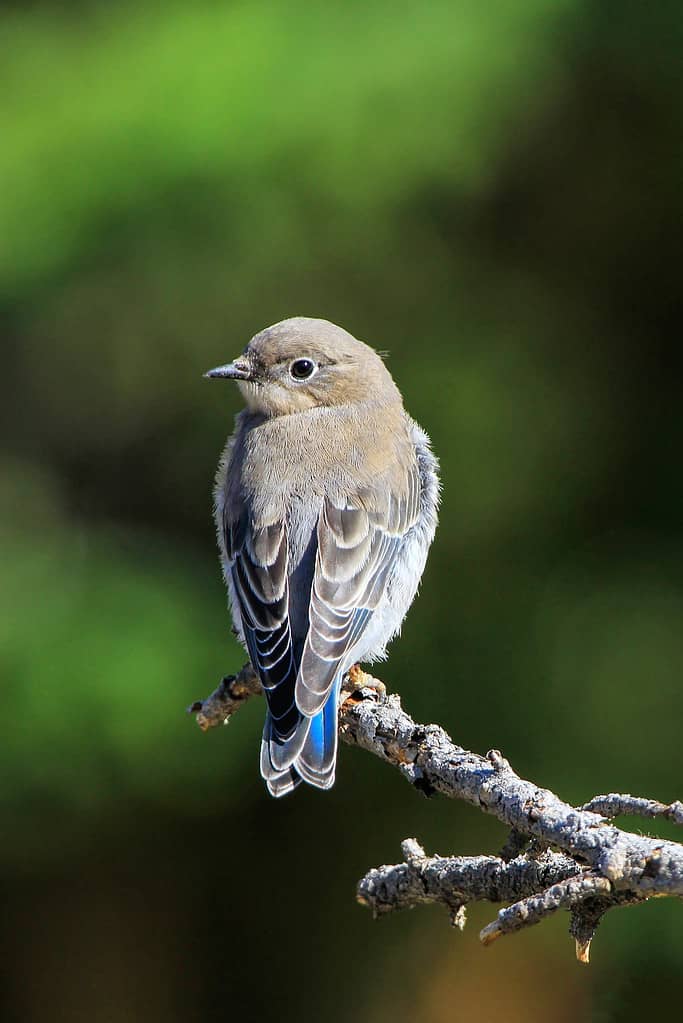
The female mountain bluebird is gray or tan with blue hues on its tail and wings.
©iStock.com/Donyanedomam
3. State Insect: Vivid Dancer Damselfly
Nevada legislators proposed a contest for schoolchildren throughout the state to select the official state insect. A group of fourth-graders from Beatty Elementary School in Las Vegas submitted the winning proposal, requesting the vivid dancer damselfly (Argia vivida) be named the official state insect of Nevada.
The students made a compelling case. First of all, the insect is found throughout Nevada. Secondly, it eats mosquitoes. And thirdly, it is blue and silver which are the official state colors of Nevada.
The damselfly is related to the dragonfly, but there are significant differences between the two. Damselflies are smaller than dragonflies. The wings also feature different shapes and positioning. When a dragonfly is at rest, its wings remain outstretched, whereas the wings of a damselfly close against its body.
Both the damselfly and the dragonfly are deadly insect predators, eating butterflies, wasps, moths, bees, flies, and virtually any other flying insect they can catch.
Damselflies, as well as dragonflies, reside near freshwater rivers, streams, lakes, and ponds. They are found on every continent except Antarctica.

Unlike dragonflies, vivid dancer damselflies close their wings while at rest.
©Gurcharan Singh/Shutterstock.com
4. State Fish: Lahontan Cutthroat Trout
The Lahontan cutthroat trout (Salmo clarki henshawi) was designated as the official state fish of Nevada in 1981. Legislators in 19 other states have also given various freshwater trout species official state status. This is often because trout need exceptionally clean water to thrive, so lawmakers use the trout’s official status to call attention to the need to conserve the state’s waterways.
The Lahontan cutthroat trout is native to the Lahontan Basin of northern Nevada, northeastern California, and southeastern Oregon. It is the largest of the cutthroat trout species.
At the turn of the 19th century, approximately 370,000 acres of lakes and more than 7,400 miles of streams were either occupied or had the potential to be occupied by the Lahontan cutthroat trout. Today, the trout has been extirpated from more than 90 percent of that historic habitat.
While the Lahontan cutthroat trout are found in 14 of Nevada’s 17 counties, three are its primary home. Elko, Humboldt, and Nye counties feature streams that hold this trout in higher numbers than the remainder of the state.
The Lahontan cutthroat trout is classified as a threatened species under the Endangered Species Act. State, tribal, and federal hatcheries are raising and releasing Lahontan cutthroat trout in its native Nevada, California, and Oregon. These fish are released to help with species recovery and also to provide a boost to the fisheries in these states. Although the species is listed as threatened, a special rule under the Endangered Species Act still permits regulated angling.
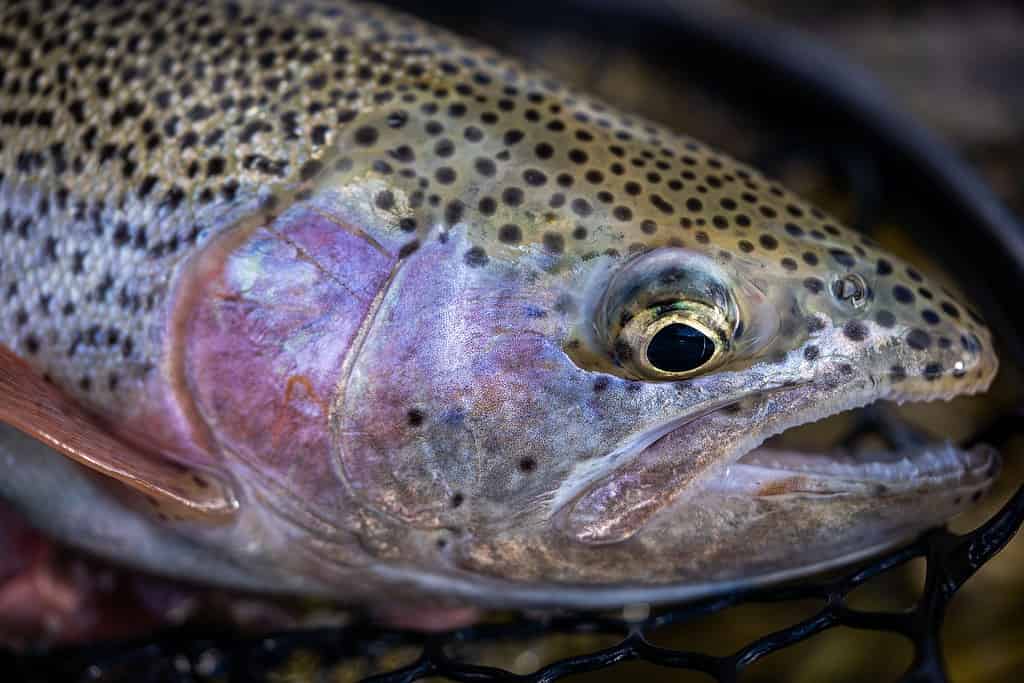
Lahontan cutthroat trout fishing is well-regulated to protect the species.
©iStock.com/Wirestock
5. State Fossil: Ichthyosaur
Forty-two states have designated official state fossils. These creatures may have inhabited the states millions of years ago, but they deserve recognition as part of the history of these states. However, few official fossils are as closely tied to the culture and identity of their state as Nevada’s. When there is a popular local beer named in honor of the official state fossil, you know this prehistoric creature is a source of state and local pride!
What Is an Ichthyosaur?
The Ichthyosaur (Shonisaurus popularis) is an extinct marine reptile that lived some 200 million years ago. This predator stalked the Triassic Sea, which covered the land we know today as Nevada.
Nevada is the only state to possess a complete fossilized skeleton of an Ichthyosaur (a name that means “fish lizard”). The skeleton was found in Belin, Nevada, and measures about 55 feet long.
The Ichthyosaur was named the official fossil of Nevada in 1977. More fossils continue to be found at Berlin-Ichthyosaur State Park. In fact, nearly 40 of these school bus-sized fossils lie in the stone of this park.
The number of Ichthyosaur fossils in one centralized location has puzzled paleontologists for decades, but new research may provide answers as to why this concentration of fossils exists in this place. It is believed that this part of modern-day Nevada was a breeding ground for these prehistoric marine reptiles. Ocean animals often return to the same area to mate. Some sharks have nurseries. Certain whale species return to the same region to mate each year. Researchers believe the same may have been true for Ichthyosaurs. Nevada could have been a breeding ground and/or nursery for these ancient ocean giants.
How many more Ichthyosaur fossils will be found in the state? It’s anyone’s guess. But, if the breeding ground hypothesis proves true, the number of fossil finds is sure to keep going up.
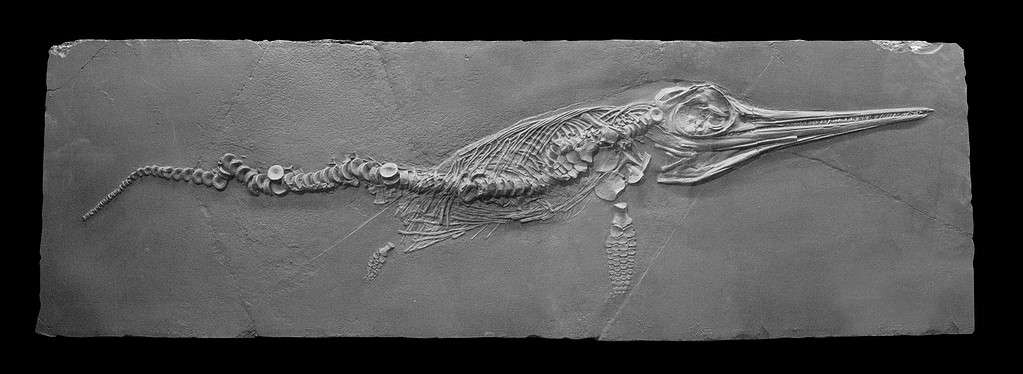
Ichthyosaur fossils keep showing up in Berlin, Nevada.
©iStock.com/valeniker
6. State Reptile: Desert Tortoise
The desert tortoise (Gopherus agassizii) was chosen as Nevada’s official state reptile in 1989. It is also the state reptile of California.
The desert tortoise grows up to 14 inches long and can weigh up to 15 pounds. The tortoise’s coloration fits with its desert habitat, with hues of yellow, brown, tan, and black. It is remarkably long-lived, with a lifespan of 60 years or more.
The desert tortoise is found in southern Nevada, western Arizona, southeastern California, and northwestern Mexico.
The tortoise belongs to the Gopherus genus, and it’s easy to see why that name was chosen. This tortoise beats the heat of its desert environment by burrowing into the ground, much in the same way that a gopher does. A desert tortoise may spend as much as 95% of its life in tunnels underneath the desert sands.
Along with digging tunnels, the desert tortoise will also dig troughs in the sand to catch rainwater. When the rare desert rains come, the desert tortoise will drink copiously from these troughs. After such a drink, the tortoise may go up to a year before drinking again.
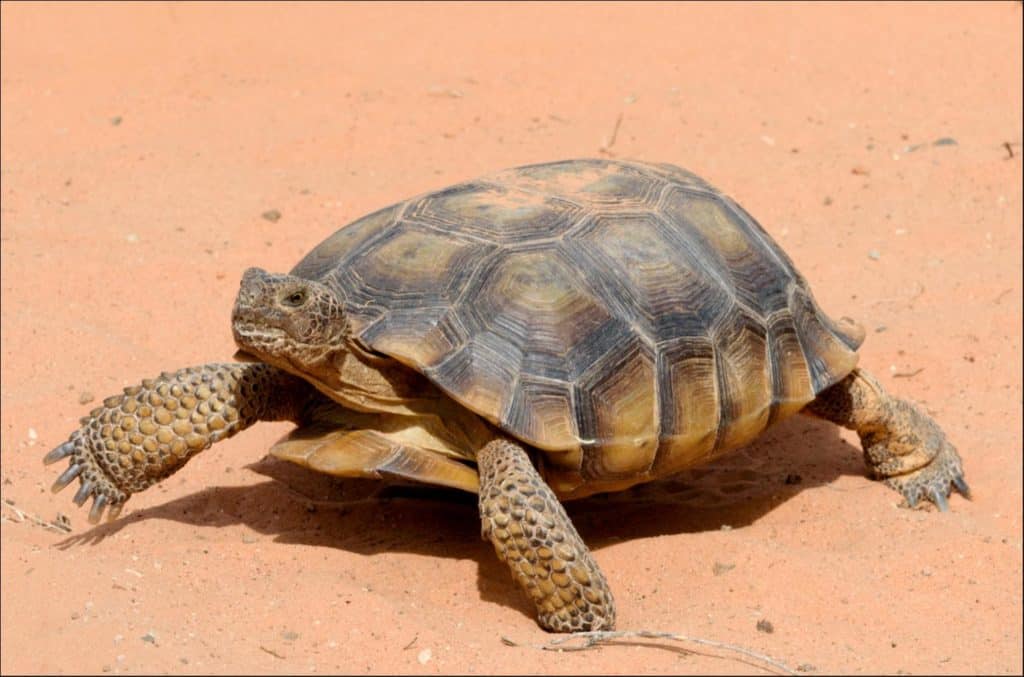
The desert tortoise uses its claws to burrow into tunnels, much like a gopher.
©John Andrus/Shutterstock.com
Conservation Efforts
The desert tortoise population has seen a severe decline. In 1990, it was classified as a threatened species under the Endangered Species Act.
The tortoise faces multiple challenges. One is predation. Since the shell of a young tortoise doesn’t harden for about five years, it is easy prey for ravens, hawks, eagles, coyotes, foxes, bobcats, skunks, and other predators.
Drought also threatens the tortoise. While it needs remarkably little water, it still requires some water to survive. Drought has also reduced the grasses and flowers that are its primary food source.
Habitat loss, vehicular traffic, and disease also threaten the desert tortoise.
The photo featured at the top of this post is © Tom Tietz/Shutterstock.com
Thank you for reading! Have some feedback for us? Contact the AZ Animals editorial team.






